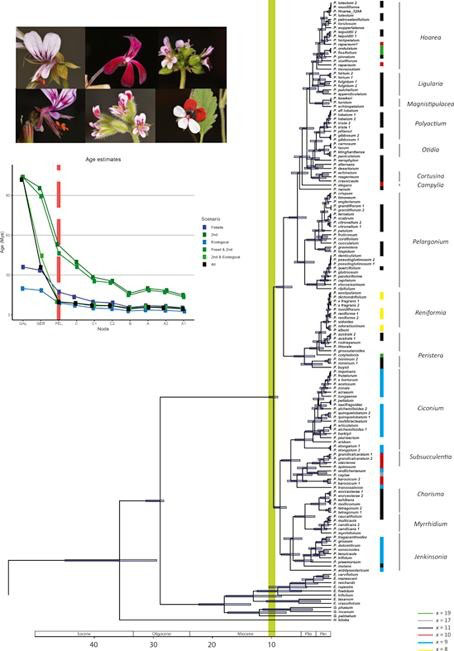 Another study from the Jones and Schlichting lab on the diversification of Pelargonium with vouchers deposited in the CONN herbarium.
Another study from the Jones and Schlichting lab on the diversification of Pelargonium with vouchers deposited in the CONN herbarium.
van de Kerke S.J., B. Shrestha, T.A. Ruhlman, M.L. Weng, R.K. Jansen, C.S. Jones, C.D. Schlichting, S. Hosseini, S. Mohammadin, M.E. Schranz & F.T. Bakker. 2019. Plastome based phylogenetics and younger crown node age in Pelargonium. Molecular Phylogenetics and Evolution 137: 33–43. pdf
Abstract reads: The predominantly South-African plant genus Pelargonium L’Hér. (Geraniaceae) displays remarkable morphological diversity, several basic chromosome numbers as well as high levels of organelle genomic rearrangements, and represents the 7th largest Cape Floristic Region clade. In this study, we reconstructed a phylogenetic tree based on 74 plastome exons and nuclear rDNA ITS regions for 120 species, which represents 43% taxon coverage for Pelargonium. We also performed a dating analysis to examine the timing of the major radiations in the genus.
Phylogenetic analyses of nucleotide, amino acid, and ITS alignments confirmed the previously-documented subgeneric split into five main clades ((C1,C2),(B(A1,A2))) although clade only A1 received low bootstrap support.
Using calibration evidence from a range of sources the Pelargonium crown age was estimated to be 9.7 My old, much younger than previous estimates for the genus but similar to recent studies of other Cape Floristic lineages that are part of both Fynbos and Succulent Karoo biomes.